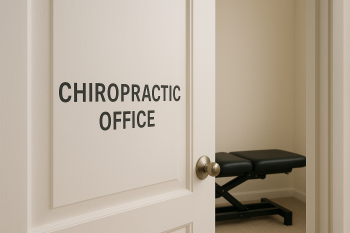
Temporomandibular Joint (TMJ) disorders are a common source of pain and discomfort, affecting the jaw joint and the muscles that control jaw movement. These disorders can lead to a range of symptoms from clicking noises to severe pain.
While many factors can contribute to TMJ issues, one often overlooked cause is misalignment in the upper cervical spine. In this blog post, we'll explore how upper cervical chiropractic care can address this root cause, potentially offering relief from TMJ symptoms.
By downloading the Digital Patient Chart mobile app you can better control your patient portal.
What is TMJ Disorder?
TMJ, or temporomandibular joint, is the hinge that connects your jaw to your skull, allowing you to move your jaw up and down and side to side. When this joint is misaligned or damaged, it leads to what's known as a TMJ disorder (TMD). Symptoms can include jaw pain, difficulty in moving the jaw, clicking sounds, lockjaw, and even headaches or earaches.
Understanding the cause is crucial for effective treatment. Common causes include:
- Jaw injury
- Arthritis
- Teeth grinding or clenching
- Stress leading to muscle tension
However, an often underappreciated factor is the cervical spine's role in TMJ health.
The Link Between Neck and Jaw
The neck, particularly the upper cervical spine, is intricately connected to jaw function. The atlas (C1) and axis (C2) vertebrae are directly below the skull, and their alignment can significantly influence jaw mechanics. Here's how:
- Anatomical Proximity: The jaw joints are close to the upper cervical vertebrae, meaning any misalignment can directly affect jaw movement.
- Neurological Connections: The nerves controlling jaw movement also interact with those in the neck. Misalignment can disrupt this communication, leading to muscle imbalances or spasms in the jaw area.
- Muscular Influence: Muscles like the sternocleidomastoid and others that attach from the neck to the jaw can become strained or misaligned due to neck issues, indirectly affecting TMJ function.
Upper Cervical Chiropractic Care for TMJ Disorders
Upper cervical chiropractic focuses on correcting the alignment of the top two vertebrae in the spine. Here’s how this specialized chiropractic approach can benefit those with TMJ:
- Precision Adjustment: This method involves precise, gentle adjustments to correct misalignments in the upper neck.
- Restoring Balance: Correcting cervical misalignment can restore proper posture, alleviate muscle tension, and improve nerve function, all of which are beneficial for jaw health.
- Non-Invasive Treatment: Unlike surgery or heavy medication, upper cervical chiropractic care offers a natural approach, aiming to treat the cause rather than just the symptoms.
Real-World Impact
Many patients have reported significant improvements in their TMJ symptoms post-treatment from upper cervical chiropractic care:
- Improved Jaw Mobility: Patients often find they can open and close their jaws with less pain and without the characteristic clicking or popping.
- Reduction in Pain: Both jaw and neck pain can decrease as the root cause of misalignment is addressed.
- Holistic Benefits: Beyond TMJ, patients might experience relief from related symptoms like migraines, tinnitus, and vertigo, which can also stem from upper cervical issues.
TMJ disorders can significantly impact your quality of life, but understanding the connection between jaw function and neck alignment can open new avenues for treatment.
Upper cervical chiropractic care offers a promising, non-invasive pathway to not just manage but potentially resolve TMJ symptoms by addressing underlying spinal issues. Remember, the key to managing TMJ disorders effectively often lies in looking beyond the jaw itself to the interconnected musculoskeletal system.









Leave a comment